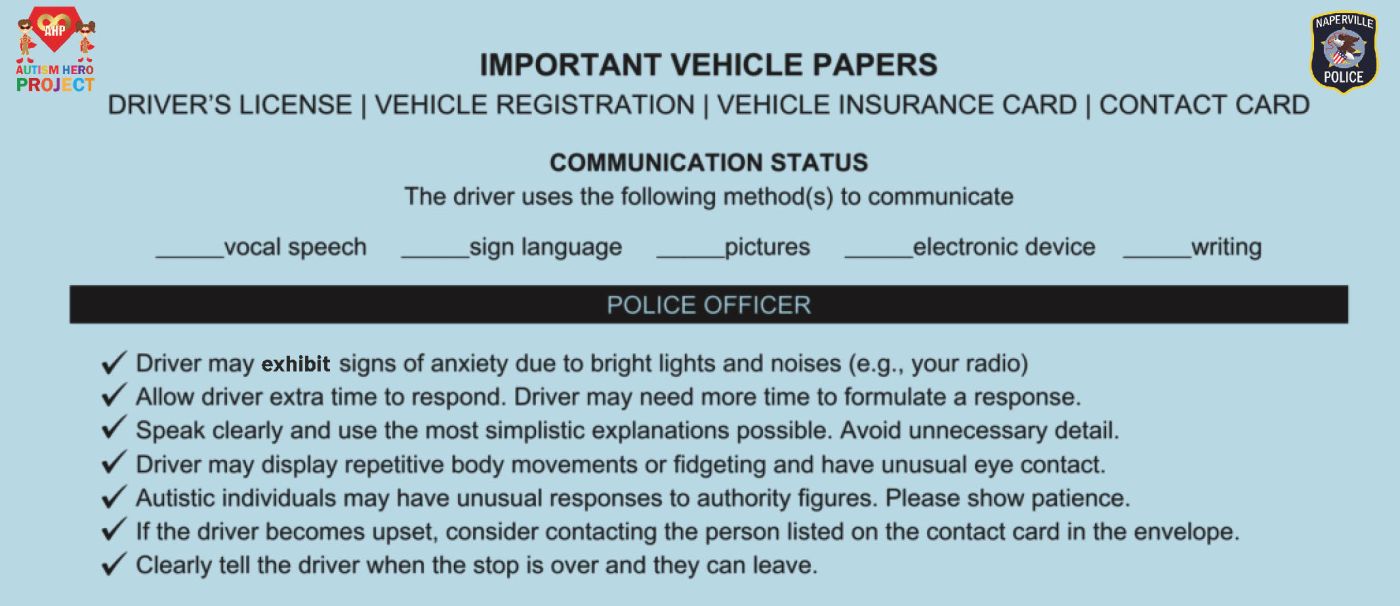URGENT UPDATE: The Naperville Police Department has just announced the launch of the innovative Blue Envelope Program, aimed at enhancing interactions between police officers and individuals with autism. This initiative is designed to mitigate misunderstandings during traffic stops and other encounters, providing vital communication tools for both parties.
According to a memo released on August 21, the program allows individuals on the autism spectrum to present a blue envelope to officers, containing crucial information about their communication needs and preferences. This proactive approach aims to reduce anxiety and improve outcomes during police interactions.
The contents of the envelope can include specific instructions, such as whether the individual is non-verbal, communicates using sign language, or has sensitivities to bright lights. It also reminds individuals to keep their hands visible on the steering wheel and informs them that officers may carry flashlights or radios. This dual guidance ensures that both parties can engage in a manner that respects and acknowledges individual needs.
“It equips officers with tools and guidance for respectful, effective communication,” stated a representative from the Naperville Police Department. The program not only helps officers understand the specific requirements of individuals with autism but also offers simple reminders for participants on how to interact with law enforcement.
Participation in the Blue Envelope Program is completely voluntary and free of charge. Residents, workers, and frequent visitors to Naperville can easily access envelopes at several locations, including the Naperville Police Department, Turning Pointe Autism Foundation, Fry Family YMCA, and all three public library branches.
Other police departments across the United States, including those in Massachusetts, California, and New York, have implemented similar programs, underscoring the importance of tailored communication strategies. However, the Naperville initiative is specifically designed for local officers, ensuring that they are trained to recognize and respond appropriately to the significance of the blue envelope.
This program not only introduces a vital resource for enhancing police-community relationships but also serves as a model for other jurisdictions looking to improve their interactions with individuals who have disabilities.
For more details on the Blue Envelope Program, visit the official Naperville city website at www.naperville.il.us/services/naperville-police-department/programs-and-services/blue-envelope-program.
As the initiative rolls out, the Naperville community remains hopeful that this program will foster a safer and more understanding environment for everyone.
